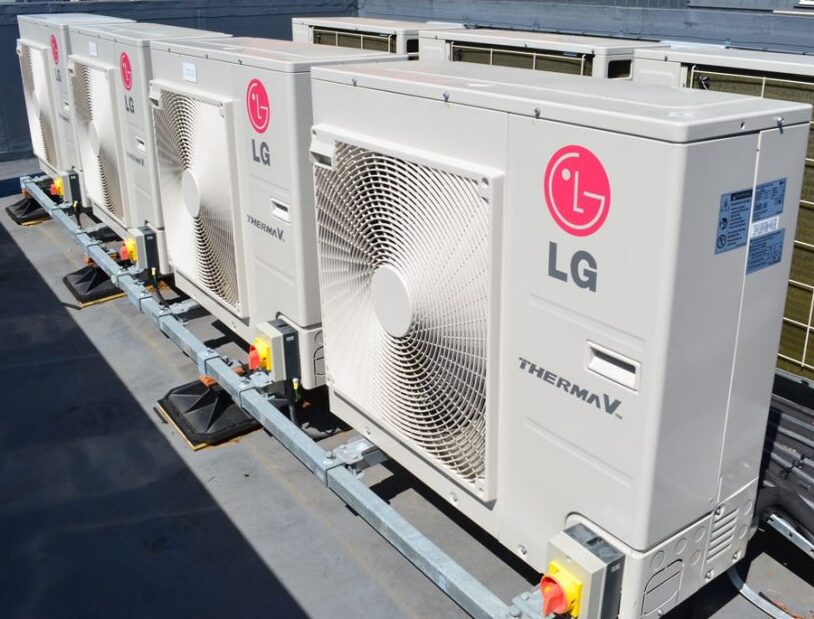As buildings age, their HVAC systems often become inefficient or even inadequate for maintaining optimal comfort. The wear and tear of decades of use can lead to higher energy bills, poor air quality, and uneven heating or cooling throughout the building. Upgrading an aging HVAC system is not just about enhancing comfort but also about improving efficiency, reducing operational costs, and ensuring the safety of the building’s occupants. Here are five essential HVAC upgrades that can transform the heating and air conditioning system in an older building, ensuring it operates as efficiently and effectively as possible.
-
Switching to a Modern VRF System
Variable Refrigerant Flow (VRF) systems are a significant upgrade over traditional HVAC systems, especially in older buildings. These systems are highly efficient, using advanced inverter-driven technology to control the flow of refrigerant to multiple units within a building. VRF systems are ideal for buildings that require zoned heating and cooling, allowing for precise temperature control in different areas.
One of the primary benefits of a VRF system is its ability to maintain consistent temperatures while using less energy compared to older, more conventional systems. Since VRF systems use variable speeds to control compressor output, they adapt to changing demands, reducing energy consumption during off-peak times. This upgrade not only enhances comfort but also provides substantial savings on energy bills over time. For older buildings where space constraints may exist, the flexibility and compact nature of VRF systems make them an excellent choice for improving heating and air conditioning solutions.
-
Installing a Mini Split System for Zoned Heating and Cooling
For buildings with limited ductwork or that rely on outdated forced-air systems, installing a mini split system offers a versatile and efficient solution. Mini split systems can be easily retrofitted into existing spaces without the need for extensive renovations or duct installation. These systems use wall-mounted units or floor-mounted mini splits that connect to an outdoor unit, providing heating and cooling to individual rooms or zones within the building.
The primary advantage of mini split systems is their ability to provide precise temperature control in different parts of the building, a feature that’s particularly useful for aging buildings with rooms that experience varying levels of heating or cooling needs. Whether you’re looking for a mini split heat pump for year-round comfort or a ductless air conditioning solution for cooling only, these systems offer exceptional flexibility. Furthermore, with the efficiency of a mini split system, energy consumption can be optimized by only conditioning the spaces that need it, which significantly reduces the overall environmental impact.
-
Upgrading to a Central Air Conditioning System
Many older buildings still rely on outdated window air conditioners or inefficient central HVAC units. Installing a modern central air conditioning system is one of the most impactful upgrades to improve comfort levels and energy efficiency. Newer central AC units are more energy-efficient and quieter than older models. With advanced technologies, these systems can cool the building more effectively, ensuring consistent indoor air quality and temperature control.
Upgrading to a new central air conditioner also allows for better integration with modern thermostats and control systems, making it easier to manage and optimize energy use. Whether you are replacing a large, inefficient central air unit or installing a new one for the first time, a modern system ensures that cooling is distributed efficiently across the building. This can significantly improve the comfort levels of residents, employees, or tenants in older buildings.
-
Improving Indoor Air Quality with Advanced Filtration Systems
One of the most important considerations in older buildings is the quality of indoor air. Many aging HVAC systems use outdated filters that are not effective at removing allergens, dust, and other pollutants. Upgrading to an advanced air filtration system is essential for improving the overall indoor air quality and maintaining the health and comfort of building occupants.
Modern HVAC systems offer a variety of filtration options, including HEPA filters, UV lights, and electronic air cleaners that can capture smaller particles and disinfect the air. These upgrades help to reduce the risk of respiratory issues, particularly in buildings with poor ventilation or that have accumulated dust and allergens over the years. Additionally, these systems can enhance comfort by maintaining cleaner air, which is especially important for people with allergies, asthma, or other respiratory conditions.
-
Incorporating Smart Thermostats and Controls
As HVAC technology continues to evolve, the integration of smart thermostats and controls has become a game-changer for both residential and commercial HVAC systems. These devices allow building owners or occupants to control the temperature and energy usage of the heating and air conditioning system from anywhere, using a smartphone or other smart devices.
Smart thermostats learn the preferences of the occupants and adjust the temperature based on occupancy patterns and outside weather conditions. By integrating a smart thermostat with an HVAC system, buildings can achieve greater efficiency while maintaining comfort. For aging buildings with older HVAC systems, incorporating a smart thermostat can breathe new life into the system, making it more adaptable and responsive to the needs of the building. Furthermore, these systems often come with energy-saving features that can help reduce overall energy consumption and operating costs.
Upgrading an HVAC system in an aging building is an investment that can yield significant benefits in terms of energy efficiency, comfort, and overall building value. Whether it’s installing a new VRF system, upgrading to a central air conditioning system, or improving air quality with advanced filtration, each upgrade provides an opportunity to enhance the building’s performance. With the right HVAC solutions in place, building owners can ensure their spaces are more comfortable, energy-efficient, and healthier for all occupants.
When deciding which upgrades to prioritize, it’s essential to assess the building’s specific needs, such as space constraints, the current state of the HVAC system, and the desired comfort level. Consulting with HVAC contractors or technicians can help determine the best solutions that will maximize efficiency and reduce cost





























